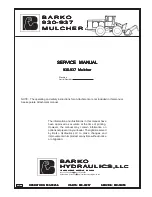12.02.2010 V1.0
-31-
the measurement of the desired frequency (LED stops flashing) and the new chase
frequency will be adopted.
6.4.3.2 Manual sequencing via Go keys
This mode is displayed in the STORE or EDIT mode as follows:
Activate this mode paying attention to the LEDs of the control section mentioned
above.
As can be seen from the illustration, only the LED for the Go key may be activated for
this mode. If this is not the case, activate or deactivate the relevant LEDs by pressing
the corresponding keys (repeatedly, if necessary).
In the manual flow mode, you can switch from one step to the next or previous step
by pressing the
GO+
or
GO-
keys.
The use of the manual instead of the automatic flow mode may be indicated, for
example, if you have to react to breaks in the music.
This mode is appropriate for temporary manual triggering of chases, since chases
can only be switched forward via the control section when they are directly selected
or when they belong to a speed group, an element of which is currently selected.
If you wish to always trigger a chase manually, we recommend that you configure the
corresponding flash key as trigger key (see
3.3.2 Flash
).
-> For quick start guide continue with
6.4.4 Changing the fade time
6.4.3.3 Manual sequencing by sound trigger
This mode is displayed as follows in the STORE or EDIT mode:
Activate this mode paying attention to the LEDs of the control section mentioned
above.
As can be seen from the illustration, only the LED for the sound key may be activated
in this mode. If this is not the case, activate or deactivate the relevant LEDs by
pressing the corresponding keys (repeatedly, if necessary).
In this mode, the switch to the next step is triggered by the low-frequency part of an
audio signal (e.g. bass drum). For this purpose, you can induct a line audio signal via
the Sound In input. In the stand-alone mode of the console, use the Sound In input
on the rear panel of the Licon FX (see
1.2.3 Control elements on the rear panel
). In
Summary of Contents for LICON FX
Page 1: ...Bedienungsanleitung Version 1 1...
Page 2: ...11 02 2010 Ver 1 0 2...
Page 7: ...11 02 2010 Ver 1 0 7 1 2 2 Elemente auf der Frontplatte...
Page 8: ...11 02 2010 Ver 1 0 8 1 2 3 Elemente auf der R ckseite...
Page 46: ...User manual Version 1 1...
Page 47: ...12 02 2010 V1 0 2...
Page 48: ...12 02 2010 V1 0 3...
Page 53: ...12 02 2010 V1 0 8 1 2 2 Control elements on the front panel...
Page 54: ...12 02 2010 V1 0 9 1 2 3 Control elements on the rear panel...


















